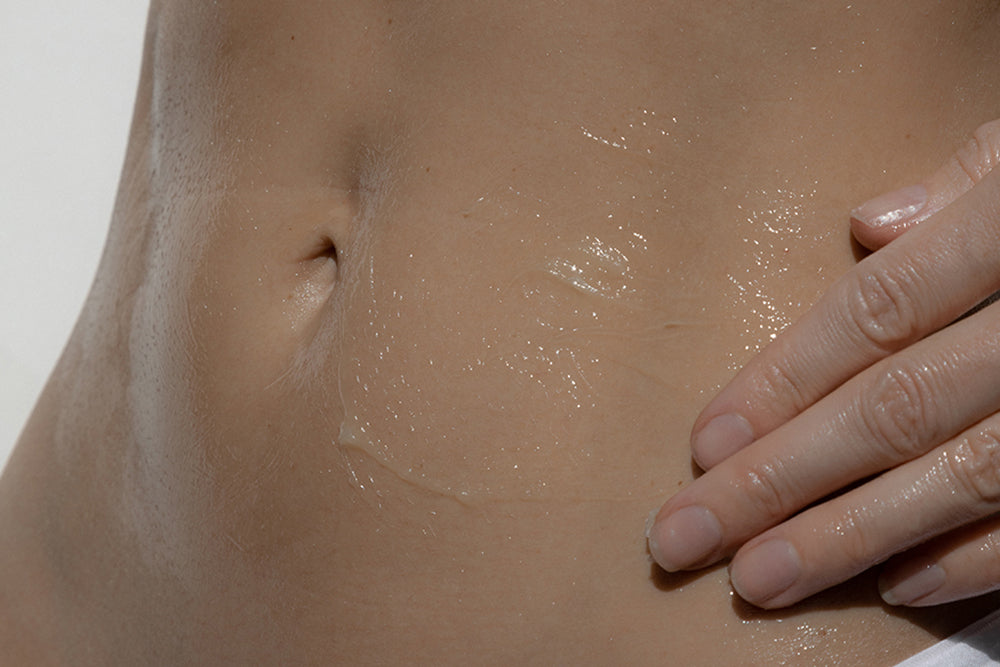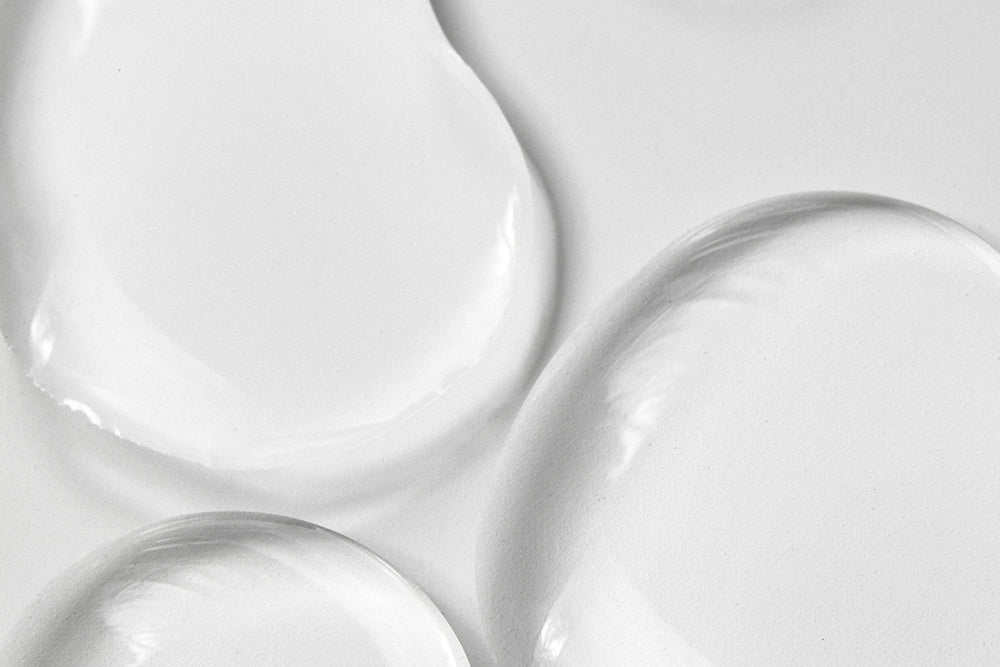
ingredient focus: sandalwood

the bottom line
Sandalwood is one of those ingredients that seems to have everything – a rich history, an intoxicating scent, and incredible efficacy on multiple levels. Here we delve into the science and uses of this extraordinary oil. Read on to discover why the world treasures this natural beauty, and how we can protect it.
first layer: the history
Sandalwood is one of the oldest recognized cosmetic ingredients, with use documented as far back as 500 BC when it was incorporated into traditional Indian and Chinese medications. Cleopatra is also reported to have used sandalwood, and detailed treatises on cosmetic formulas with sandalwood were written during the Gupta period of India and the Tang Dynasty of China.
Sandalwood is a class of woods which is part of the same botanical family as European mistletoe. It originated in the Malayan Peninsula and was brought to India through trade networks. Heavy, yellow, and fine-grained, sandalwood is able to retain its fragrance for decades. Sandalwood oil is extracted from the woods, and is known for its distinctive warm, smooth, and milky wood scent. When used in perfumes it acts as a woody base, and in smaller amounts it acts a fixative to enhance the longevity of the more volatile components. The two most common species of sandalwood are Santalum album, known as East Indian sandalwood, and Santalum spicatum, which grows in Western Australia. The production of Indian sandalwood with high levels of fragrance oils requires that the tree be at least 15 years old, with older trees yielding the highest oil content and quality. Australia is currently the largest producer of Santalum album secondary to strict regulations on harvesting in India secondary to over-exploitation. Sandalwood is one of the most expensive woods in the world. In 2020, Australian sandalwood oil sold for $1500/kg, while Indian sandalwood oil sold for $2500/kg.
second layer: the science
Sandalwood oil consists of multiple constituents, the most prominent of which are alpha-santalol and beta-santalol. Sandalwood has been studied extensively in both in vitro and clinical studies and has demonstrated antimicrobial, antiviral, anti-inflammatory, antioxidant, and anti-tyrosinase properties. Too much “anti”? Keep reading to see why it’s a good thing.
Most of us would agree that anything that fights bacteria and viruses is a positive. Sandalwood oil has been documented to be effective against both gram-positive and gram-negative strains of bacteria, including Staphylococcus and Streptococcus. It’s also been shown to battle fungus and yeast, as well as herpes virus simplex. Beta-santalol, one of the key components of sandalwood oil, can inhibit the replication of influenza virus A.
Blocking inflammation in the body is another critical issue, and sandalwood can help here, too. Sandalwood oil fights inflammation by suppressing multiple pro-inflammatory pathways, including blocking the production of pro-inflammatory cytokines*, leukotrienes*, prostaglandin E2 (PGE2)*, and adenosine monophosphate (AMP)*. Treatment with sandalwood oil has been shown to suppress the production of cytokines and chemokines by more than 75%. The component santalols have been shown to be the major anti-inflammatory agents.
In line with the use of sandalwood as an anti-inflammatory agent is its utility as an antioxidant, with sandalwood oil being shown to have antioxidant activity at concentrations as low as 0.025%. An in vitro study of sandalwood oil demonstrated that it possesses antioxidant potential that can scavenge radical oxygen species (ROS)* generated by free radical* compounds. This study also showed that sandalwood oil’s antioxidant activity is superior to that of vitamin E (tocopherol).
Exposure to ultraviolet (UV) light, in conjunction with natural changes in our bodies, causes an increase in the production of matrix metalloproteinases (MMP)* by dermal fibroblasts. The result is increased degradation of the extracellular matrix* with premature photoaging and skin cancer. Sandalwood oil is also able to inhibit the pollutant-induced level of MMP. Blue light is found in the 400-470 nm region of the visible spectrum and has also been shown to contribute to premature skin aging. One clinical study showed that sandalwood oil used at concentrations between 1-10% protects the skin against the oxidative stress induced by urban stress and blue light exposure. In one test, cells were exposed to blue light at 412 nm, blue light at 450 nm, and cigarette smoke. At a concentration of 0.2%, sandalwood oil was able to achieve a 76% reduction in the level of ROS in cells exposed to 412 nm. Cells exposed to 450 nm showed a 75% reduction with 0.2% sandalwood oil. However, treatment with 0.2% sandalwood oil following exposure to cigarette smoke produced only a 28% decrease in the level of ROS - yet another indication (if you needed one) of just how bad cigarette smoking is for our skin. When the same test cells were exposed to ozone, sandalwood oil inhibited the expression of MMP by 88%.
Finally, sandalwood oil has demonstrated activity against tyrosinase, a key enzyme in the pathway of melanin formation in the skin. One study showed that the inhibition potential of alpha-santalol was approximately 2.5 times higher than that of kojic acid, a strong tyrosinase inhibitor used in many cosmetic pigmentation treatments. Alpha-santalol has been found to be the key inhibitor of tyrosinase.
third layer: the skin
Sandalwood has been used effectively for hundreds of years for many common skin ailments, including eczema and atopic dermatitis, psoriasis, acne, and pigmentation. As a result of its ability to inhibit tyrosinase, sandalwood oil has the potential to block abnormal skin pigmentation associated with aging and exposure to UV light. A study of patients with acne showed that 90% benefitted after 2 months of treatment with sandalwood oil. When patients with eczema and atopic dermatitis were treated, 75% treated with a topical formulation of sandalwood oil achieved a 50% or greater reduction in the severity of their lesions. Another study evaluated the effect of topical sandalwood oil in patients with psoriasis and found good tolerance with alleviation of mild to moderate symptoms.
fourth layer: how we do it
We adore sandalwood oil for many reasons, including its tradition and modern efficacy, and have used it since our launch in our jasmine serum. While we initially used Santalum album in our formulations, we migrated to Santalum spicatum after several years out of respect for the global shortage of Indian sandalwood.
Coming soon – anokha’s sake & sandalwood facial lotion, a little something for men to soothe, calm, and hydrate after shaving (or not).
xx
anokha
references:
- Moy RL, Levenson C. Sandalwood album oil as a botanical therapeutic in dermatology. J Clin Aesthet Dermatol 2017; 10(16): 34-39.
- Sharma M, Levenson C, Browning JC et al. East Indian sandalwood oil is a phosphodiesterase inhibitor: a new therapeutic option in the treatment of inflammatory skin disease. Front Pharmacol 2018; 9: 200.
- Sharma M, Levenson C, Bell RH et al. Suppression of lipopolysaccharide-stimulated cytokine/chemokine production in skin cells by sandalwood oils and purified alpha-santalol and beta-santalol. Phytother Res 2014; 28: 925-932.
- Moy RL, Levenson C, So JJ, Rock J. Single-center, open-label study of a proprietary topical 0.5% salicylic acid-based treatment regimen containing sandalwood oil in adolescents and adults with mild to moderate acne. J Drugs Dermatol 2012; 11: 1403-1408.
- Kolanthan VL, Brown A, Soobramaney V, et al. Clinical evaluation of Indian sandalwood oil and its protective effect on the skin against the detrimental effect of exposome. Cosmetics 2022; 9: 35-45.
- Francois-Newton V, Brown A, Andres P, et al. Antioxidant and anti-aging potential of Indian sandalwood oil against environmental stressors in vitro and ex vivo. Cosmetics 2021; 8: 53-66.
- Mohankumar A, Kalaiselvi D, Levenson C, et al. Antioxidant and stress modulatory efficacy of essential oil extracted from plantation-grown Santalum album L. Indus Crops Prod 2019; 140: 111623.
- Misra BB, Dey S. TLC-bioautographic evaluation of in vitro anti-tyrosinase and anti-cholinesterase potentials of sandalwood oil. Nat Prod Com 2013; 8: 253-256.
- https://www.wikipedia.org
- Sharma M, Levenson C, Clements I et al. East Indian Sandalwood Oil (EISO) alleviates inflammatory and proliferative pathologies of psoriasis. Front Pharmacol 2017: 16(8): 125-138.
*definitions:
cytokine: a cytokine is a substance which is secreted by cells of the immune system and which can affect other cells.
chemokines: a chemokine is a cytokine which attracts white blood cells to sites of infection.
extracellular matrix: the extracellular matrix (we’re not talking about a movie, here) is a three-dimensional network of extracellular macromeolecules and minerals, including collagen, enzymes, proteins, and hydroxyapatite that provide structural and biochemical support to surrounding cells.
free radicals: a free radical is an unstable molecule created during normal cell metabolism. Free radicals can accumulate in cells in cause damage to other structures, including DNA, lipids, and proteins.
leukotrienes: leukotrienes are inflammatory mediators produced in leukocytes (white blood cells).
prostaglandins: prostaglandins are a group of compounds with hormone-like effects which include the promotion of uterine contractions. they also play a role in the generation of the inflammatory response.
reactive oxygen species (ROS): reactive oxygen species are a type of unstable molecule that contains oxygen and which can easily react with other molecules in a cell. they can cause damage to DNA, RNA, proteins, and even cell death.
matrix metalloprotein (MMP): matrix metalloproteinase is a member of a group of enzymes that can break proteins such as collagen. they require zinc or calcium to work properly and are critical for wound healing.
for more beauty definitions, explore the glossary.
faq's:
how do I use sandalwood oil on the face?
because sandalwood is an essential oil, it is imperative to use it in a carrier oil, such as almond, sesame, sunflower, or jojoba. 2-3 drops of essential oil in 1 oz of carrier oil will be sufficient to provide you with the benefits of sandalwood oil.
what is the best sandalwood essential oil?
the best sandalwood essential oil is believed to come from East India. however, secondary to overharvesting its production has been strictly limited by the governments of India, Pakistan, and Nepal. Australia currently produces over 80% of the world’s sandalwood oil.
can I use sandalwood oil for skin lightening?
sandalwood oil has demonstrated efficacy as a tyrosinase inhibitor, which is a key step in the pathway of melanin formation. it is able to help brighten areas of hyperpigmentation and even skin tone, but will not lighten the overall color of the skin.
why is sandalwood oil so expensive?
sandalwood oil is so expensive because it is harvested from a limited and endangered resource, the sandalwood tree. the harvesting of sandalwood is strictly limited in India, and Australia is now the primary global source.
how do I choose red sandalwood vs white sandalwood for skin?
white sandalwood powder is derived from Santalum album, whereas red sandalwood powder is formed from Pterocarpus santalinus. While white sandalwood powder has a more notable scent, red sandalwood powder is more commonly used for the face in masks.



1 comment
Hi all! This is a good site.
ScottVervE
leave us a comment
This site is protected by hCaptcha and the hCaptcha Privacy Policy and Terms of Service apply.